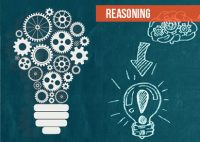Seating Arrangement For SBI PO : Set – 02

Seating Arrangement For SBI PO : Set – 02
(1-5) Study the following information and answer the questions given below:A, B, C, D, E, F, G, and H are sitting around a circular table facing the centre. Each one of them has a different profession viz Doctor, Engineer, Architect, Teacher, Clerk, Shopkeeper, Businessman and Banker.A sits third to the right of Teacher. D sits second to the left of G. G is not an immediate neighbour of the Teacher. Only one person sits between B who is the Shopkeeper and Teacher. The one who is an Architect sits third to the right of the Shopkeeper. H sits between Architect and Engineer. E is not an immediate neighbour of H.Engineer sits third to the right of Clerk. Only one person sits between Businessman and F. E is neither a Businessman nor a Doctor.
1. Which of the following is true with respect to the given seating arrangement?
a) E is an architect
b) E is an immediate neighbor of the engineer
c) The clerk is an immediate neighbor of the banker
d) Shopkeeper sits second to the right of the teacher
e) The teacher sits between H and the engineer
2. What is the profession of H?
a) Businessman
b) Banker
c) Architect
d) Teacher
e) Shopkeeper
3. What is the position of doctor with respect to the banker?
a) Second to the right
b) Third to the left
c) Second to the left
d) Fourth to the left
e) Immediately to the left
4. Who sits exactly between the architect and the businessman?
a) Banker and shopkeeper
b) C and H
c) Clerk
d) Doctor
e) C and teacher
5. Who amongst the following is a clerk?
a) F
b) D
c) E
d) C
e) G
Answers:

1) 3
2) 4
3) 2
4) 4
5) 5
(6-11): Study the following information to answer the given questions.
Twelve people are sitting in two parallel rows containing six people each such that they are equidistant from each other. In row 1, A, B, C, D, E and F are sitting facing South. In row 2, P, Q, R, S, T and V are sitting facing North. Therefore, in the given seating arrangement, each member sitting in a row faces another member of the other row.Three persons sit between C and D. Either C or D sits at an extreme end of the line. The one who faces D sits third to the left of R. S faces the one who sits third to the left of A and he cannot sit adjacent to R. The immediate neighbour of Q faces the immediate neighbour of A. Only one person sits between P and T, who is facing the one sitting on the immediate right of E. Neither E nor F faces R. V and Q cannot sit adjacent to each other.
6. Who among the following faces B?
1) P
2) Q
3) T
4) R
5) S
7. Who among the following sit at the extreme ends of the rows?
1) D, Q
2) T, F
3) E, S
4) B, T
5) F, Q
8. If E is related to P in the same way as C is related to S, which of the following is A related to, following the same pattern?
1) V
2) R
3) Q
4) T
5) Can’t be determined
9.How many persons are sitting between E and F?
1) None
2) One
3) Two
4) Three
5) Four
10. Four of the following five are alike in a certain way based on the given arrangement and so form a group. Which is the one that does not belong to that group?
1) P–D
2) Q–F
3) Q–A
4) S–B
5) T–E
11. Which of the following is true regarding P?
1) Q is an immediate neighbour of P.
2) P faces the immediate neighbour of B.
3) P sits second from the left end of the row.
4) P sits at one of the extreme ends.
5) P faces the one who is second from the right end of the row.
Answers:

6) 4
7) 2
8) 2
9) 4; Three persons A, B and C
10) 3; In all other pairs, either of the persons sits at an extreme end.
11) 2


